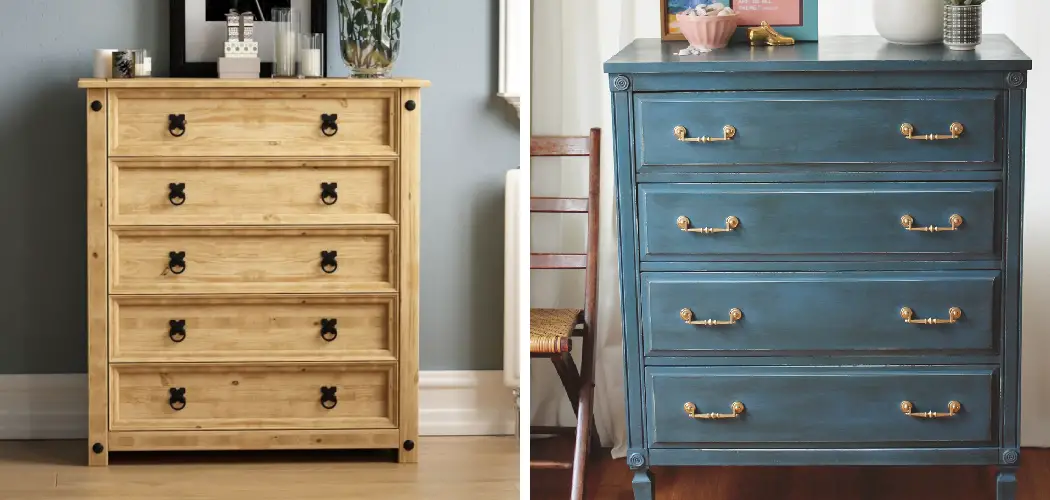Is your old wood furniture in desperate need of a makeover? Don’t worry, and you can give it a new lease on life with some chalk paint! Before you start, you’ll need to ensure the furniture is clean and free of any dust or dirt. This article will show you how to clean wood furniture before chalk painting. Keep reading to learn more.
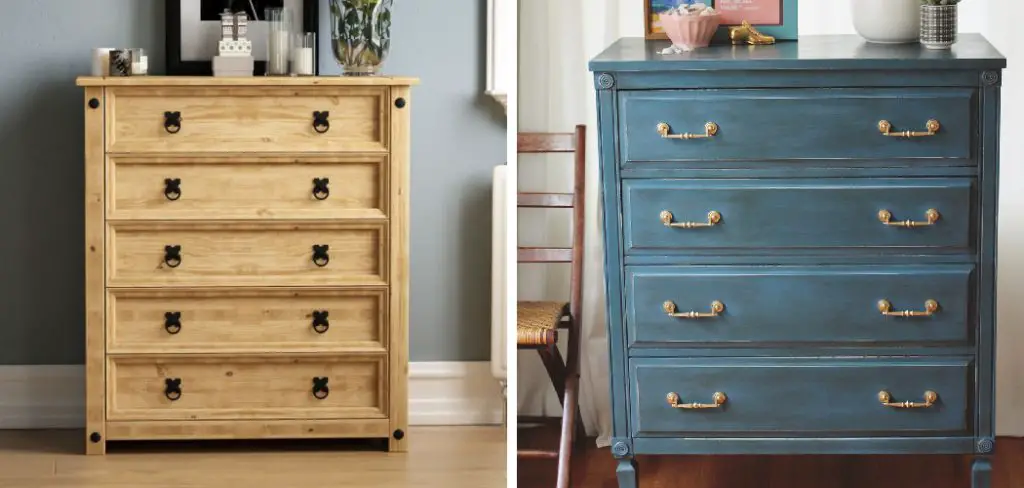
Summary: If you plan on painting your wood furniture with chalk, it’s important to clean the pieces beforehand. This will help avoid any mistakes and ensure a smooth finish. Here are some tips for cleaning wood furniture:
1. Wipe down the piece with a dry cloth to remove any dust or debris.
2. Use a degreaser to remove any grease or oil.
3. Use a water-soluble cleaner to clean the surface of the wood.
4. Allow the furniture to dry completely before painting.
What Causes Wood Furniture to Look Dull?
A few things can cause wood furniture to look dull and lifeless. One of the most common culprits is built-up dust. Dust can accumulate on wood furniture over time, making it look dull and dingy. Another common cause of dull-looking wood furniture is grease and grime. Grease and grime can build up on wood furniture from cooking, handling food, or even just touching it with your hands. If left unchecked, grease and grime can make wood furniture look dirty and old.
Additionally, sunlight can also cause wood furniture to fade and look dull. The other main cause of dull-looking wood furniture is simply ages. Over time, wood furniture can lose its luster and shine. Lastly, dull-looking wood furniture can also result from a poor cleaning routine. If you don’t clean your wood furniture regularly, it will eventually start to look dull and lifeless.
Why You Should Clean Wood Furniture Before Chalk Painting
Now that you know some of the main causes of dull-looking wood furniture let’s talk about why you should clean it before chalk painting. First of all, it’s important to clean wood furniture before chalk painting because otherwise, the paint won’t adhere properly. If there’s any dust, dirt, or grease on the surface of the wood furniture, the paint won’t stick as well. As a result, your chalk paint job won’t look as nice or last as long.
Additionally, it would be best if you cleaned wood furniture before chalk painting because it will help the paint to look its best. If the wood furniture is clean, the paint will be able to really show off its color and beauty. Plus, a clean surface will also help the paint to last longer. Another reason to clean wood furniture before chalk painting is that it will make the painting process easier. If the wood furniture is clean, you won’t have to worry about stopping to clean it as you go.
This will save you time and make the painting process much more enjoyable. Lastly, cleaning wood furniture before chalk painting is important because it will protect your health. Dust, dirt, and grease can contain harmful bacteria that can make you sick. If you inhale these particles, you could have respiratory problems or other health issues. Therefore, cleaning wood furniture before chalk painting is important to protect your health.
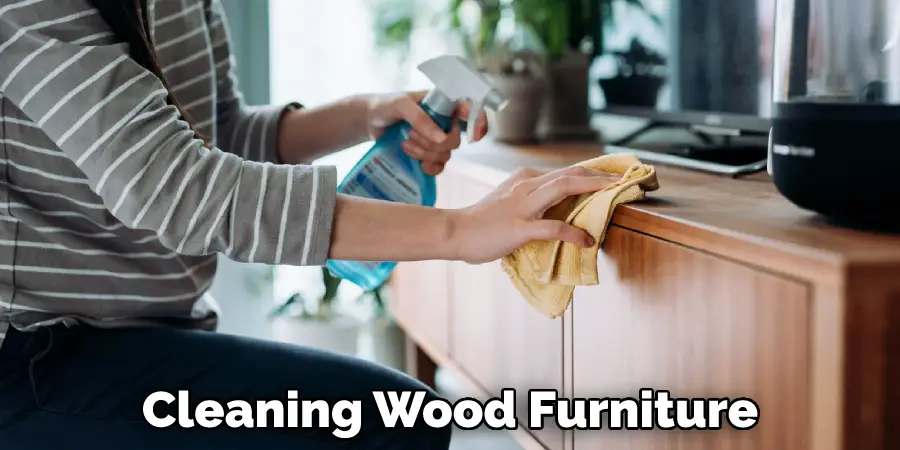
10 Ways How to Clean Wood Furniture Before Chalk Painting
1. Vacuum the Furniture
The first step in how to clean wood furniture before chalk painting is to vacuum it. Use a soft brush attachment on your vacuum cleaner to avoid scratching the wood surface. Next, vacuum the entire piece of furniture, including the crevices and intricate details. If possible, vacuum the furniture outside to avoid making a mess in your home.
2. Use a Microfiber Cloth
After you’ve vacuumed the furniture, use a microfiber cloth to remove any remaining dust. Microfiber cloths are great for picking up dust because they’re electrostatically charged. This means they attract and hold onto dust particles. Microfiber cloths are also soft so that they won’t scratch the wood surface. To use a microfiber cloth, first, dampen it with water. Then, wipe the cloth over the furniture’s surface to pick up any remaining dust.
3. Use Dish Soap and Water
If the furniture still looks dull, you may need to wash it with soap and water. This is especially true if the furniture has grease or grime. Mix a small amount of dish soap with warm water and use a soft cloth to scrub the furniture’s surface. Be sure to rinse the furniture off completely with clean water when you’re done. You may need to do this a few times to clean the furniture.
4. Use White Vinegar and Water
If the furniture has tough stains, you may need to use white vinegar and water. This is a natural way to clean furniture, and it’s also very effective. To use this method, mix equal parts white vinegar and water in a bowl. Then, use a clean cloth to wipe down the furniture. Let the vinegar and water mixture sit on the furniture for a few minutes before wiping it off. You may need to repeat this process a few times to remove tough stains.
If you’re still not seeing results, you can try using a stronger vinegar and water mixture. Just be sure to test it on a small furniture area first to ensure it won’t damage the finish.
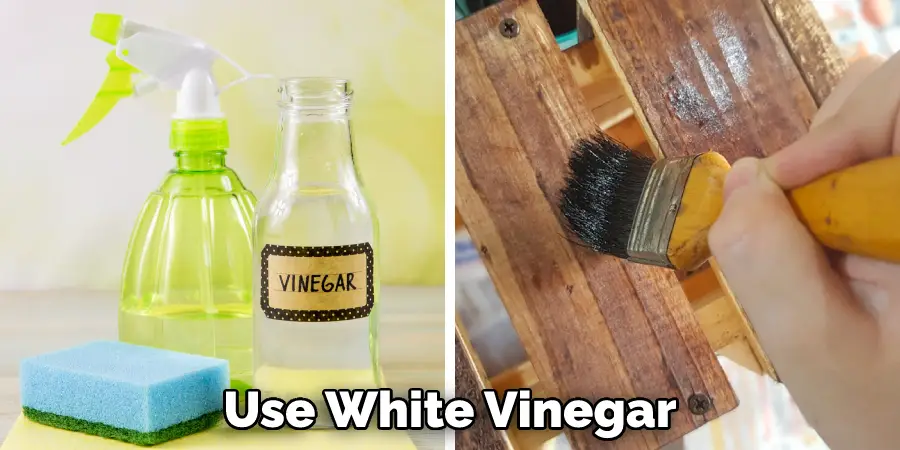
5. Use Baking Soda and Water
Another natural way to clean wood furniture is by using baking soda and water. Mix 1/4 cup of baking soda with 1 quart of warm water. Use a soft cloth to apply the mixture to the furniture. Wipe in the direction of the grain. Rinse with clean water and dry with a soft cloth.
6. Use Borax
If you’re looking for a stronger cleaning solution, you can try using borax and water. Combine 1/2 cup borax with 1 gallon (3.8 L) of hot water and mix until the borax is dissolved. Dip a sponge or brush into the mixture and scrub the furniture. Rinse with clean water and dry with a towel. This solution is great for removing tough stains, dirt, and grime. It’s also effective at killing mold and mildew.
Be sure to wear gloves when using this solution, as borax can be drying to your skin. You may also want to open a window or door to ventilate the area while you’re cleaning.
7. Use Ammonia
You can also use ammonia and water if you’re dealing with tough stains. Make a solution of one part ammonia to three parts water, and apply it to the stain with a clean cloth. Wipe the area with a damp cloth, and dry it with a clean towel. You may need to repeat this process a few times to remove the stain completely. Be sure to ventilate the area well while you’re working, and wash your hands thoroughly after you’re done.
8. Sand It
If you’re still unhappy with how your furniture looks, you may need to sand it. This will remove any remaining stains and give the wood a smooth surface for painting. First, use coarse-grit sandpaper to remove any large imperfections. Then, switch to finer-grit sandpaper to smooth out the wood. Be sure to sand in the same direction as the wood grain to avoid damaging it.
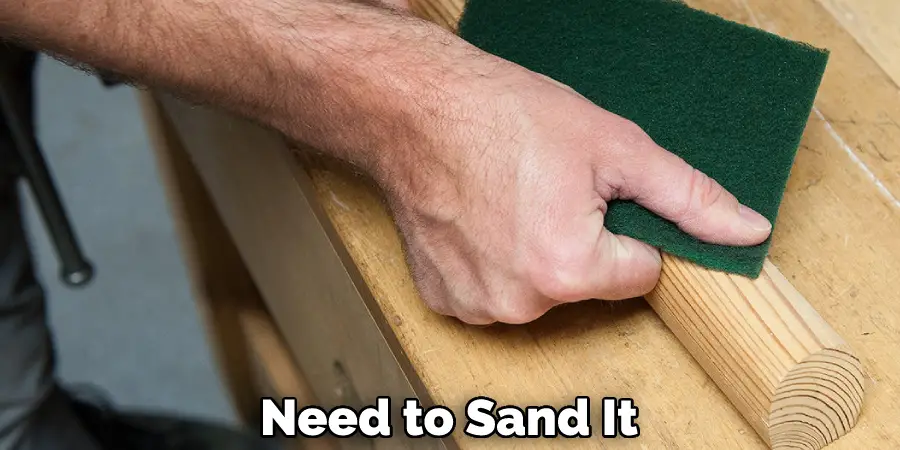
9. Use Alcohol
If you’re looking for a natural way to clean wood furniture, you can try using alcohol. Rubbing alcohol will remove dirt and grease from wood furniture. You can either use a cloth dampened with rubbing alcohol or make your cleaning solution by mixing 1 part rubbing alcohol with 1 part water. Be sure to test the solution on a small furniture area first to ensure it doesn’t damage the finish.
To use this method, apply the solution to a clean cloth and wipe down the furniture’s surface. You may need to use a little elbow grease to remove stubborn dirt and grime. Once you’re finished, wipe the surface with a clean, damp cloth to remove any residue.
10. Wax the Furniture
After you’ve cleaned the furniture and let it dry, you may want to wax it. Wax will help protect the wood from dirt and moisture. It will also make the furniture look shiny and new. To wax the furniture, you’ll need a can of clear wax and a clean, soft cloth. Dip the cloth into the wax and then rub it onto the furniture in a circular motion. Be sure to cover the entire piece of furniture.
Once you’re finished, let the wax dry for a few hours before using the furniture. If you want to achieve a really smooth, professional finish, you can buff the wax with a clean, soft cloth once it’s dry. This will make the furniture look even shinier.
Tips and Warnings on How to Clean Wood Furniture Before Chalk Painting
Tips:
- Always test a small, inconspicuous area of the furniture first to ensure that your cleaning method won’t damage the finish.
- Be sure to ventilate the area well while you’re cleaning, as some solutions (like ammonia) can be harsh on your lungs.
- If you’re using a commercial cleaner, follow the instructions on the label.
- Use a clean, soft cloth to avoid scratching the furniture.
Warnings:
- Do not use harsh chemicals on antiques or delicate furniture.
- Be sure to wear gloves when using any chemical cleaner.
- Always follow the manufacturer’s instructions when using any cleaner.
- If you’re unsure about how to clean your furniture, it’s always best to consult a professional.

Can You Use Chalk Paint Straight Over Varnish?
Yes, using chalk paint directly over varnish is possible, but it is important to prepare the surface properly to ensure proper adhesion. Before painting, it is advisable to clean the surface with a solution of TSP (Trisodium Phosphate) and water to remove any dirt, grease, or wax that may be on the surface. Once the surface is clean, it is important to sand it lightly to create a surface to which the paint can adhere.
This helps to give the paint something to grip onto and creates a rough surface for the paint to stick to. After sanding, wipe the surface with a clean cloth to remove any dust or debris, and then apply the chalk paint as per the manufacturer’s instructions. In some cases, applying a coat of primer or bonding agent to the surface may be necessary before painting to ensure proper adhesion.
What Can I Use to Clean Wood Furniture Before Painting?
Before painting wood furniture, it’s crucial to clean it properly to ensure the paint adheres well and looks seamless. The first step would be to remove any loose dirt or debris using a microfiber cloth or a soft-bristled brush. Next, you can use a wood cleaner or a mixture of warm water and mild soap to clean the furniture thoroughly.
If your furniture has tough stains or grime buildup, try using a more powerful cleaner like mineral spirits or denatured alcohol. Be sure to apply it in a well-ventilated area, and wear gloves to protect your skin. You can then wipe down the furniture with a clean, damp cloth and let it dry completely before painting.
It’s important to note that when cleaning wood furniture, it’s best to avoid using harsh chemicals or abrasive scrubbers, as these can damage the surface of the wood. Additionally, you should always test any new cleaner on a small, inconspicuous area of the furniture before using it on the entire piece.
Do I Need to Prime Before Chalk Paint?
Yes, it is important to prime before using chalk paint on most surfaces. Priming serves as a base coat that helps the paint adhere better and last longer. It also helps create a smoother surface and covers any stains or discolorations. The chalk paint may not stick properly without proper priming, resulting in an uneven finish and an increased risk of chipping or peeling over time.
When choosing a primer, it is important to consider the material of the surface you will be painting. For example, a wood surface will require a different type of primer than a metal surface. Some chalk paint brands offer their own primer designed to work seamlessly with their specific paint formula.
Generally, the process of priming before using chalk paint involves thoroughly cleaning and sanding the surface to be painted, followed by applying the primer in thin, even coats. After the primer has dried completely, the chalk paint can be applied similarly, using thin coats and allowing each layer to dry fully before applying the next.
Conclusion
So there you have it! Everything you need to know about how to clean wood furniture before chalk painting. Follow the tips and warnings above to avoid damaging your furniture. We hope this guide has been helpful. Happy painting!

